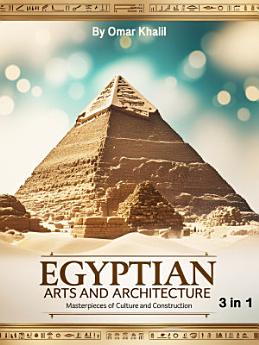Egyptian Arts and Architecture: Masterpieces of Culture and Construction (3 in 1)
About this ebook
The first section explores the foundations of Egyptian art and architecture, examining the materials, motifs, and symbolism used to glorify gods, celebrate pharaohs, and represent the eternal journey of the soul. Discover how art was not merely decorative but functional—serving spiritual, political, and ceremonial purposes across temples, tombs, and public monuments. From colossal statues to detailed carvings, each piece told a story and reinforced the power of belief.
Delving into the art of Egyptian papyrus, this book uncovers the role of scrolls, texts, and illustrations in documenting mythology, religious rites, and administrative life. The use of vivid pigments and calligraphy brought sacred texts like the Book of the Dead to life, reflecting not only linguistic skill but a visual language of order and beauty. Papyrus art was a medium through which knowledge and culture were preserved for generations.
The final section centers on the art commissioned by and for the pharaohs, exploring how divine kingship shaped visual culture. From the statues of Ramses II to the golden treasures of Tutankhamun, pharaonic art conveyed authority, divinity, and eternal life. This volume reveals how every artistic creation—from tomb murals to ceremonial thrones—embodied a worldview where beauty, power, and eternity converged.







